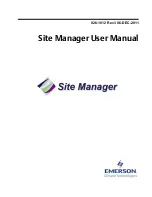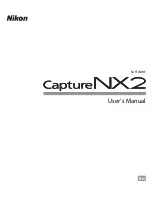
PART 1: CX-Programmer
OMRON
CHAPTER 4 – Reference
CX-Programmer _Page 85
Enter the Start Address, the Size in channels (16 bit words) then select the Data types that can be allocated in
that area. On pressing the
OK
button, the address range is checked for validity and an appropriate error message
in a message box is displayed. On closing the message box the user is returned to this dialog and the first field
that is considered to be in error.
Note that it is not possible to select types until the restricted radio button has been selected otherwise the type
selection list box is grayed out. The type selection list box is a multiple selection list box.
Limitations
Timer/Counter memory areas are not available for address auto allocation.
It is not possible to have bit types in an area that is only word addressable.
The length of the address range must be less than or equal to the size of that memory area.
It is not possible to have auto allocation areas that overlap other areas.
The length of the address range must be greater than zero.
Copying Auto Allocated Symbols
When symbols are copied, any symbol with a fixed address is marked as being used if it occurs within an auto
allocated area. Auto allocated symbols that are copied across from one PLC to another will be assigned new
addresses within the auto allocation areas allowed on the PLC they are being transferred to. These symbols will
be assigned in alphabetical order rather than the order that they are copied across. If they have been assigned an
address by the PLC that they are being transferred from, they will not necessarily keep the same address.
Instructions
When contacts, coils, instructions and any symbols (auto allocated or not) are deleted, the address space they
occupied is freed for use by other elements as and when they are entered. Existing symbols that are auto
allocated but without an address are not updated and either needs to be re-entered or the auto allocation areas
need to be edited. Automatically allocated symbols are only allocated addresses when they are first entered or
when the auto allocation ranges are added/edited.
Rules for Auto Allocation
When the
OK
button is pressed and there are auto allocation areas to use, each of the programs is searched in
the order it appears in the tree. Each program is searched first for contacts, coils and instructions with fixed
addresses. If any of these fixed addresses are within an auto allocation area then those addresses are marked as
used and cannot be further auto allocated to other symbols. After this, non auto allocated symbols (symbols with
fixed addresses) within each program are checked. If any of these fixed symbols are within an auto allocation
area, then those symbol addresses are marked as used and cannot be further auto allocated to other symbols.
Finally, auto allocated symbols are allocated an address from the remaining addresses in an auto allocation area,
whether they already have an address or not. The symbols are allocated according to their alphabetical order in
the symbol table.
From then on, anytime that user enters a new contact, coil, instruction or symbol with a fixed address, then that
address is immediately marked as being used if it occurs within an auto allocation area. Any symbols that the
user enters that don’t have a fixed address are immediately auto allocated an address if available. The exception
to this is if symbols are entered directly as operands in the instruction dialog. These symbols cannot be auto
allocated. If these symbols are to be auto allocated they should entered either in the symbol table first, or by
using the browse button on the instruction dialog.
When a program is developed by several people, the contents of the symbol table edited by one person may be
overwritten by another person. It is therefore possible that consistency may not be maintained when automatic
address allocation is used. It is best to have only the person managing the entire program edit the automatic
address allocation data, and to have that person distribute the symbol table to other people. In addition, have
only that person transfer the symbol table to the PLC.
Program Editing
A number of procedures can be performed from within the Ladder program but it depends upon whether an
instruction, contact, coil, or workspace has been selected.
To view the Ladder program, select the
View Diagram
button from the toolbar.
The following elements can be selected from the
Diagram
toolbar and placed directly into the
Ladder program.
Содержание CX-Programmer 9
Страница 1: ...Cat No W446 E1 10 CX Programmer Ver 9 SYSMAC WS02 CXPC_ V9 OPERATION MANUAL...
Страница 2: ......
Страница 3: ...SYSMAC WS02 CXPC V9 CX Programmer Ver 9 Operation Manual Revised December 2009...
Страница 4: ......
Страница 6: ......
Страница 19: ...CX Programmer_Page xvi Unit Versions and Lot Numbers...
Страница 30: ......
Страница 31: ...PART 1 CX Programmer...
Страница 32: ......
Страница 100: ......
Страница 120: ......
Страница 198: ...PART 1 CX Programmer CHAPTER 4 Reference OMRON CX Programmer _Page 118...
Страница 224: ...PART 1 CX Programmer Keyboard Shortcuts CX Programmer OMRON CX Programmer _Page 144...
Страница 240: ......
Страница 241: ...PART 2 CX Server PLC Tools...
Страница 242: ......
Страница 250: ......
Страница 256: ......
Страница 268: ...PART 2 CX Server PLC Tools CHAPTER 2 PLC Memory Component OMRON CX Server PLC Tools_Page 18...
Страница 286: ......
Страница 338: ......
Страница 382: ......
Страница 414: ......
Страница 430: ......
Страница 436: ......
Страница 437: ...PART 3 CX Server Runtime...
Страница 438: ......
Страница 482: ......
Страница 488: ......
Страница 504: ......
Страница 530: ......
Страница 540: ......
Страница 541: ......
Страница 542: ......
















































